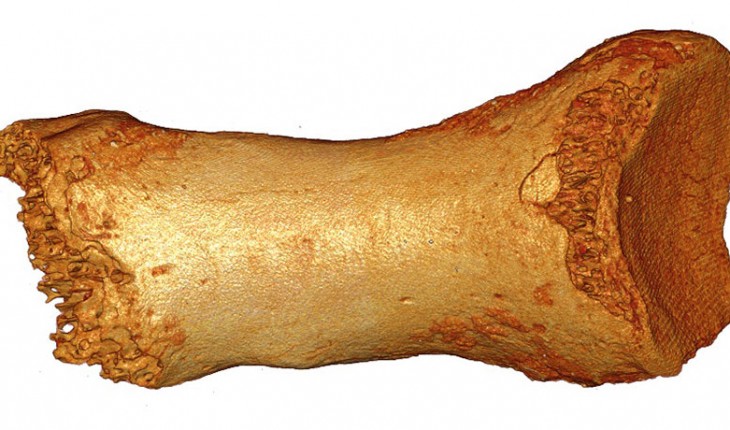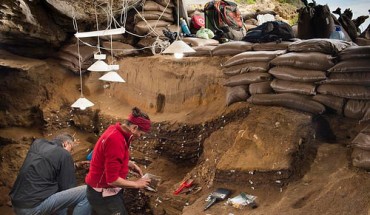Mingling of genes pushes timeline of human-Neandertal mating back to 110,000 years ago
Humans and Neandertals may have hooked up much earlier than previously thought.
Early ancestors of humans in Africa interbred with Neandertals about 110,000 years ago, an international group of researchers reports online February 17 in Nature. That genetic mixing left its mark on the DNA of a Siberian Neandertal, the researchers have discovered. While many humans today carry bits of Neandertal DNA, this is the first time human DNA has been found embedded in a Neandertal’s genes.
If the finding is correct, it indicates that the relationship between humans and Neandertals goes further back and is more complicated than scientists supposed, says Sarah Tishkoff, an evolutionary geneticist at the University of Pennsylvania who was not involved in the study.
Geneticists knew that early modern humans and Neandertals mated about 47,000 to 65,000 years ago (SN: 6/13/15, p. 11). Evidence of that Stone Age interbreeding was uncovered when researchers found traces of Neandertal DNA slipped into the pages of the human genetic instruction book. Today, about 1.5 percent to 4 percent of the genomes of non-Africans is made up of Neandertal DNA. Some of that DNA may increase the risk of certain diseases (SN Online: 2/11/16).
Scientists had been puzzled about why they hadn’t found signs of the interbreeding in the Neandertal genome, says Graham Coop, an evolutionary geneticist at the University of California, Davis. No one could say whether the lack of human DNA in Neandertals was due to biology or cultural practices — such as shunning hybrid children — preventing human DNA from mixing into the Neandertal gene pool or simply a product of missing data, as DNA from very few Neandertals is available. The new finding indicates that DNA traveled both ways, he says.
About 1 percent to 7.1 percent of a 50,000 year-old Siberian Neandertal woman’s DNA contains traces of human DNA, Adam Siepel, a computational biologist at Cold Spring Harbor Laboratory in New York and colleagues discovered. That woman’s toe bone, found in the same cave in the Altai Mountains as the only known fossils of extinct human cousins call Denisovans, yielded some of the most well-preserved Neandertal DNA ever analyzed (SN: 1/25/14, p. 17).
Siepel and colleagues lined up the Altai Neandertal’s DNA from chromosome 21 and compared it with chromosome 21 DNA from modern humans and from two other Neandertals, one from El Sidrón Cave in Spain and one from Vindija Cave in Croatia. The Altai Neandertal shared more DNA with modern humans than the two European Neandertals did, the team found. That result indicates that there was little, if any, mixing between early human groups and populations that led to the European Neandertals, Siepel says.


Image: BENCE VIOLA

Image: BENCE VIOLA
Early humans must have left their bookmarking DNA in the Altai genetic instruction manual after the Neandertal woman’s ancestors went their separate ways from the European Neandertals. That split occurred between 68,000 and 167,000 years ago.
Exactly who the humans were who mated with the Altai Neandertal’s ancestors isn’t clear. Those humans appear to be equally related to all present-day Africans. They could be direct ancestors of all Africans. Or they could have belonged to a group that split off from the population that would give rise to today’s Africans, but didn’t leave any modern descendants. “Perhaps we’re getting a glimpse of populations that just didn’t make it,” Tishkoff says.
Also unknown is where the early interbreeding happened, Siepel says. “This is all sort of reading tea leaves.” More Neandertal DNA could help pinpoint where and when humans and Neandertals first mixed.
Siepel says some hypotheses about human migration may now need rethinking in light of the new genetic evidence. “The timeline is hard to reconcile with a dominant model of human evolution with a single major migration out of Africa about 50,000 to 60,000 years ago,” Siepel says. His group’s finding “points fairly strongly to an earlier migration out of Africa.”




